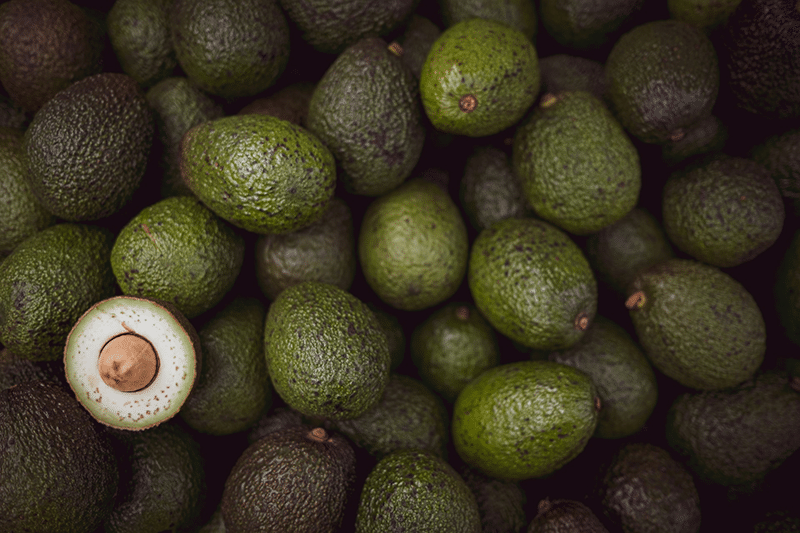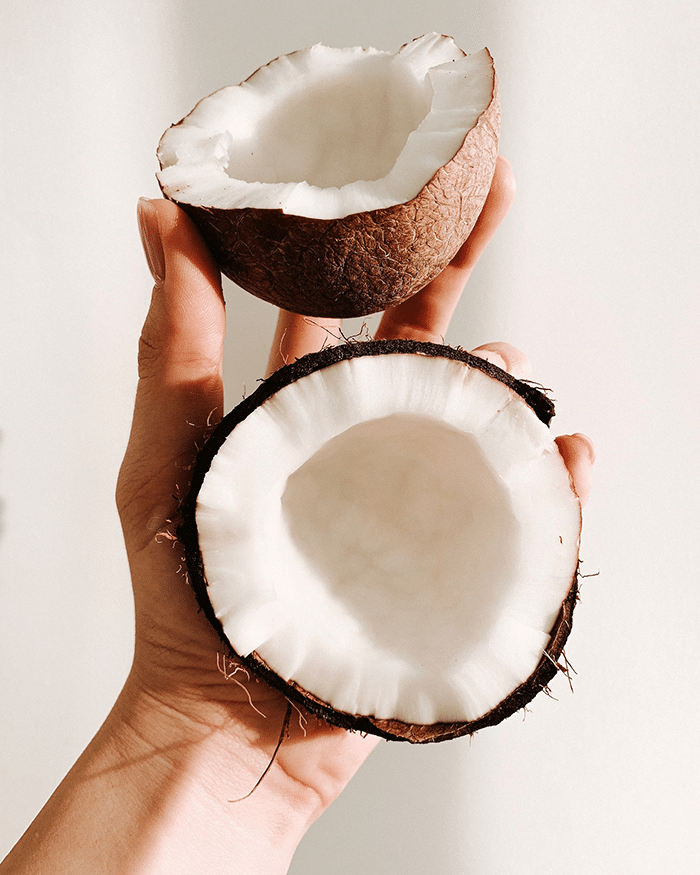
The Ultimate Guide to Fats
This guide will break down and explain the different types of fats, how they work, where to find them and why they are either harmful or beneficial to the human body in various portion sizes.
We have also covered the basics of brown fat, however that will be discussed in greater depth in a future article.
Simplified Takeaway Information
If you only gave 30 seconds of reading time, here are the main points to remember.
Pros
- The healthiest types are unsaturated fats, specifically monounsaturated and polyunsaturated (Omega-3 and Omega-6) fats.
- These unsaturated fats can be found in nuts, seeds, fish, olives and avocados.
- Healthy fats reduce inflammation in the body and may help lower the risk of heart disease and high cholesterol levels.
- Healthy fats balance hormones, generate energy, increase nutrient absorption, brain function, lower blood pressure and enhance cell structure.
Cons
- The unhealthiest types are saturated fats.
- Saturated fats can be found in baked good, crisps, pastries, fatty meats, butter and cheese.
- These can lead to heart disease, inflammation, increased risk of depression
Otherwise dive into this interesting, important and generally misunderstood topic.
- Simplified Takeaway Information
- What are the Different Types of Fat?
- What are the Healthiest Types of Fats?
- What are Unsaturated Fats?
- What are Monounsaturated Fats?
- What are Polyunsaturated Fats?
- What Are Omega-3 Fatty Acids?
- What Are Omega-6 Fatty Acids?
- What are Trans Fats?
- What are Saturated Fats?
- What Foods Contain Healthy Fats?
- What Foods Contain Unhealthy Fats?
- Why is Fat an Important Macronutrient for the Human Body?
- What is Brown Fat?
- How Does Cold Water Affect Brown Fat?
- Further Reading
- Improve Your Health
What are the Different Types of Fat?
There are several types of fat, including:
Saturated Fat: This is solid at room temperature and is typically found in animal products such as meat, butter, and cheese.
Unsaturated Fat: This is liquid at room temperature and is typically found in plant-based foods such as nuts, seeds, and vegetable oils. There are two types of unsaturated fats: monounsaturated and polyunsaturated.

Trans Fat: This type of fat is produced when liquid vegetable oils are partially hydrogenated, which makes them more solid and stable. Trans fats are often found in processed foods such as baked goods, fried foods, and snack foods.
Omega-3 Fatty Acids: This is a polyunsaturated fat that is found in fatty fish, flaxseeds, and walnuts. Omega-3s have been linked to a reduced risk of heart disease and other health benefits.
Omega-6 Fatty Acids: This type of fat is also a polyunsaturated fat and is found in vegetable oils such as soybean, corn, and sunflower oil. Omega-6s are important for maintaining good health but consuming too much can lead to inflammation.
It is important to note that not all fats are bad for you and that a healthy diet should include a balance of different types of fats.
What are the Healthiest Types of Fats?
The healthiest types are unsaturated fats, specifically monounsaturated and polyunsaturated fats. These types are known to have several health benefits and are important for maintaining good health.
Monounsaturated fats can be found in foods such as avocados, nuts, and olive oil. They are known to help reduce inflammation in the body and may help lower the risk of heart disease.
Polyunsaturated fats, such as omega-3 and omega-6 fatty acids, are important for brain function and healthy growth and development. They can be found in fatty fish such as salmon and sardines, as well as in flaxseeds, chia seeds, and walnuts.

It’s important to note that while these types are healthy, they should still be consumed in moderation as they are high in calories. A diet that is high in fat, regardless of the type, can lead to weight gain and other health problems.
In summary, the healthiest types are unsaturated fats, specifically monounsaturated and polyunsaturated fats, which can be found in foods such as nuts, seeds, olive oil, fatty fish, and avocados.
What are Unsaturated Fats?
Unsaturated fats are a type of fat that is typically liquid at room temperature and is considered a healthier type of fat compared to saturated and trans fats. They are found in plant-based foods such as nuts, seeds, vegetable oils, and some types of fish.
There are two main types of unsaturated fats: monounsaturated and polyunsaturated fats.

Monounsaturated fats are found in foods such as avocados, nuts (almonds, pecans, cashews), and vegetable oils (olive, canola, peanut). Studies have shown that consuming foods rich in monounsaturated fats can help reduce bad cholesterol levels (LDL) in the blood, which can lower the risk of heart disease and stroke.
Polyunsaturated fats are found in foods such as fatty fish (salmon, mackerel, sardines), flaxseed, chia seeds, and vegetable oils (soybean, corn, safflower). These contain essential fatty acids that the body cannot produce on its own, such as omega-3 and omega-6 fatty acids.
These fatty acids play important roles in brain function, growth and development, and reducing inflammation in the body.
Overall, unsaturated fats should be included as part of a healthy and balanced diet, while saturated and trans fats should be limited.
What are Monounsaturated Fats?
Monounsaturated fats are a type of unsaturated fat that are typically liquid at room temperature but become solid when refrigerated. Monounsaturated fats are found in a variety of plant and animal-based foods and are considered a healthy type of fat when consumed in moderation.
Foods that are high in monounsaturated fats include:
- Avocados
- Nuts such as almonds, cashews, and peanuts
- Seeds such as pumpkin and sesame seeds
- Olive, canola, and peanut oils
- Olives
- Certain types of fish such as salmon and trout
Studies have shown that consuming monounsaturated fats instead of saturated and trans fats can help improve blood cholesterol levels by reducing LDL (bad) cholesterol levels and increasing HDL (good) cholesterol levels. This, in turn, can help lower the risk of heart disease and stroke.
In summary, monounsaturated fats are a type of healthy fat found in a variety of foods such as nuts, seeds, oils, and certain types of fish. Including monounsaturated fats in a healthy and balanced diet can provide numerous health benefits.
What are Polyunsaturated Fats?
Polyunsaturated fats are a type of unsaturated fat that are typically liquid at room temperature and are found in plant-based foods and some types of fish. They are considered a healthy type of fat when consumed in moderation, and they play an important role in the body’s overall health.

There are two types of polyunsaturated fats: omega-3 and omega-6 fatty acids. Both types of fatty acids are essential, which means that the body cannot produce them on its own and they must be obtained from food.
Omega-3 fatty acids are found in fatty fish such as salmon, mackerel, and sardines, as well as in flaxseeds, chia seeds, and walnuts. They have been shown to reduce inflammation in the body, which may help reduce the risk of chronic diseases such as heart disease, arthritis, and some types of cancer. Omega-3s are also important for brain function, eye health, and fetal development during pregnancy.
Omega-6 fatty acids are found in vegetable oils such as corn, soybean, and sunflower oil, as well as in nuts and seeds such as sesame seeds and pumpkin seeds. While omega-6s are important for overall health, consuming too much of them relative to omega-3s may increase inflammation in the body.
In summary, polyunsaturated fats, including omega-3 and omega-6 fatty acids, are an important part of a healthy and balanced diet. Consuming foods high in polyunsaturated fats such as fatty fish, nuts, seeds, and vegetable oils can provide numerous health benefits, but they should be consumed in moderation as part of an overall healthy diet.
What Are Omega-3 Fatty Acids?
Omega-3 fatty acids are a type of polyunsaturated fat that are essential to human health. They are called “essential” because the body cannot produce them on its own, so they must be obtained from the diet. Omega-3 fatty acids are important for brain function, heart health, and many other bodily processes.
There are three main types of omega-3 fatty acids: eicosapentaenoic acid (EPA), docosahexaenoic acid (DHA), and alpha-linolenic acid (ALA). EPA and DHA are found mainly in fatty fish such as salmon, mackerel, and sardines, while ALA is found in plant-based foods such as flaxseeds, chia seeds, and walnuts.
Omega-3 fatty acids have been shown to have numerous health benefits, including:
- Reducing inflammation in the body, which can help lower the risk of chronic diseases such as heart disease, arthritis, and some types of cancer.
- Improving heart health by reducing triglycerides, lowering blood pressure, and reducing the risk of abnormal heart rhythms.
- Improving brain function, especially in children, and reducing the risk of cognitive decline in older adults.
- Reducing symptoms of depression and anxiety.
In general, it is recommended to consume at least two servings of fatty fish per week and to include plant-based sources of omega-3s in the diet as well.
Omega-3 supplements may also be beneficial for those who do not consume enough omega-3s through their diet, although it is important to consult with a healthcare provider before starting any new supplement regimen.
What Are Omega-6 Fatty Acids?
Omega-6 fatty acids are a type of polyunsaturated fat that are also essential to human health. Like omega-3s, they are called “essential” because the body cannot produce them on its own, so they must be obtained from the diet. Omega-6 fatty acids are found in many plant-based oils, including corn, soybean, and sunflower oil.
Omega-6 fatty acids play an important role in many bodily processes, including maintaining bone health, regulating metabolism, and supporting the immune system.

However, some research suggests that consuming too many omega-6s relative to omega-3s may increase inflammation in the body, which is linked to a variety of chronic diseases such as heart disease, diabetes, and certain types of cancer.
It is important to maintain a healthy balance of omega-3 and omega-6 fatty acids in the diet. The recommended ratio of omega-6s to omega-3s is between 2:1 and 4:1, but the typical Western diet is much higher in omega-6s, with a ratio of around 16:1.
To reduce the intake of omega-6 fatty acids, it is recommended to limit consumption of processed and fried foods, which are often high in omega-6s, and to choose healthier fats such as olive oil, avocado oil, and nuts, which are higher in monounsaturated and polyunsaturated fats. It is also important to consume adequate amounts of omega-3 fatty acids to maintain a healthy balance.
What are Trans Fats?
Trans fats are a type of unsaturated fat that are created through a process called hydrogenation, which turns liquid vegetable oils into solid fats. They are often found in processed foods such as baked goods, fried foods, and snack foods, and they can also be found in some types of margarine and shortening.
They have been shown to increase levels of LDL (bad) cholesterol in the blood while decreasing levels of HDL (good) cholesterol, which can increase the risk of heart disease and stroke. Trans fats may also increase inflammation in the body, which is linked to a variety of chronic diseases.
Due to their negative health effects, many countries have implemented regulations to limit the amount of trans fats in food products. In the United States, the FDA has banned the use of trans fats in most processed foods, although some products may still contain small amounts.
“Trans fats are unsaturated fats with trans double bonds instead of cis bonds. The type of bond affects the shape of the fatty acid chain. A trans bond creates a straight chain, whereas a cis bond results in a chain that is bent. Trans fats may be monounsaturated or polyunsaturated.”

“The production of trans fats is a result of partial hydrogenation. The process of hydrogenation consists of chemically adding atoms of hydrogen to cis unsaturated fat, eliminating the double bonds between carbon atoms and making them saturated. Hydrogenation is used by the food industry to extend shelf life by making fats less prone to rancidity – a phenomenon by which free radicals attack the double bond between carbon atoms. It also increases the fat’s melting point, making the product more suitable for frying. However, in the process of hydrogenation, some of the cis bonds in fatty acids are transformed to trans bonds, resulting in trans fatty acids rather than in saturated fatty acids.”
“Unfortunately, trans fats have deleterious effects on human health. They not only increase low-density lipoprotein cholesterol but also decrease high-density lipoprotein cholesterol, thus increasing the risk of cardiovascular disease. Trans fats provide no benefits to human health and are not essential. Therefore, there is no such thing as a safe level of dietary trans fat.”
“Trans fats naturally occur in small amounts in the fat of certain foods such as dairy and meat. They are also present in breastmilk in concentrations directly dependent on the mothers’ dietary intake of trans fats. Trans fats originating from processed foods are, by far, the largest dietary source of trans fats consumed.”
In general, it is recommended to limit or avoid the consumption of trans fats as much as possible and to choose foods that are lower in saturated and trans fats and higher in unsaturated types, such as olive oil, nuts, and fatty fish.
What are Saturated Fats?
Saturated fats are a type of fat that is typically solid at room temperature and are found in animal-based foods such as meat, butter, cheese, and cream, as well as some plant-based foods such as coconut oil and palm oil.
They have been linked to an increased risk of heart disease and other health problems when consumed in excess.
Studies have shown that consuming foods high in saturated fats can increase levels of LDL (bad) cholesterol in the blood, which can contribute to the development of heart disease and stroke. Saturated fats may also increase inflammation in the body, which is linked to a variety of chronic diseases.
It is recommended to limit the intake of saturated fats and replace them with healthier options such as unsaturated fats, which are found in plant-based foods such as nuts, seeds, vegetable oils, and some types of fish. It is also recommended to choose lean cuts of meat, low-fat dairy products, and to limit the intake of processed and fried foods, which may be high in saturated fats.
In summary, saturated fats are a type of fat found in animal-based and some plant-based foods, and consuming too much of them may increase the risk of heart disease and other health problems. It is important to limit the intake of saturated fats and replace them with healthier options such as unsaturated fats.
What Foods Contain Healthy Fats?
There are many foods that contain healthy fats, including:
Fatty fish such as salmon, mackerel, tuna, and sardines, which are rich in omega-3 fatty acids.
Nuts and seeds such as almonds, walnuts, chia seeds, flaxseeds, and pumpkin seeds, which are rich in monounsaturated and polyunsaturated fats.
Avocado, which is rich in monounsaturated fats and also contains fibre and other important nutrients.
Olive oil, which is high in monounsaturated fats and also contains antioxidants that may have health benefits.
Coconut oil, which is a source of saturated fat but also contains medium-chain triglycerides (MCTs) that are metabolized differently by the body and may have health benefits.

Grass-fed beef and dairy products, which may be higher in beneficial fatty acids such as conjugated linoleic acid (CLA) and omega-3s than conventionally raised animal products.
Eggs, which contain both saturated and unsaturated fats and are a good source of protein and other important nutrients.
It is important to consume these foods as part of a balanced diet that includes a variety of fruits, vegetables, whole grains, and lean protein sources.
It is also important to pay attention to portion sizes and limit consumption of highly processed and fried foods, which are often high in unhealthy fats.
What Foods Contain Unhealthy Fats?
Foods that are high in unhealthy fats include:
- Processed and fried foods, such as fast food, chips, and baked goods, which are often high in trans fats, which are known to increase the risk of heart disease.
- Packaged snacks and desserts, which often contain saturated and trans fats, as well as added sugars and refined carbohydrates.
- Processed meats, such as sausages, hot dogs, and deli meats, which are often high in saturated fats and sodium.
- High-fat dairy products, such as cheese, butter, and cream, which are high in saturated fats.
- Margarine and other vegetable oil spreads, which often contain trans fats and are not a healthy alternative to butter.
- Beef and pork products that are high in saturated fat, such as ribs, bacon, and fatty cuts of meat.
It is important to limit consumption of these foods and choose healthier alternatives, such as lean protein sources, fruits, vegetables, whole grains, and healthy fats such as those found in fish, nuts, and seeds.
When cooking at home, it is also important to use healthier cooking methods such as grilling, baking, or sautéing instead of frying.
Why is Fat an Important Macronutrient for the Human Body?
Fat is an important macronutrient for the human body for several reasons:
Energy Source: Fat is a concentrated source of energy. When the body needs energy, it can break down fat stores to fuel activity.
Hormone Production: The body needs fat to produce and regulate hormones, including sex hormones, stress hormones, and other important signaling molecules.
Cell Membrane Structure: Fat is a key component of cell membranes, which are responsible for protecting and regulating the contents of cells.
Nutrient Absorption: Many important vitamins and minerals are fat-soluble, which means they require fat to be properly absorbed and used by the body.
Insulation and Protection: Fat plays an important role in insulation and protection of vital organs, as well as helping to regulate body temperature.
Brain Function: The brain is made up of about 60% fat, and the body needs fat to support the development and function of the brain and nervous system.
However, not all types of fat are beneficial to the body, and excessive intake of unhealthy fats can lead to health problems such as obesity, heart disease, and diabetes. It is important to consume healthy fats in moderation as part of a balanced diet that includes a variety of nutrient-rich foods.
What is Brown Fat?
Brown fat, also known as brown adipose tissue (BAT), is a type of fat tissue that is found in small amounts in the bodies of humans and other mammals. Unlike white fat, which stores energy in the form of triglycerides, brown fat is specialized to generate heat through a process called thermogenesis.
Brown fat is brown in colour due to the presence of large numbers of mitochondria, which are the organelles in cells responsible for producing energy. Mitochondria in brown fat contain a protein called uncoupling protein 1 (UCP1), which allows them to generate heat instead of ATP (adenosine triphosphate), the molecule that cells use to store and transfer energy.

Brown fat is more abundant in newborns and hibernating animals, where it plays an important role in thermoregulation. In recent years, researchers have discovered that brown fat is also present in adult humans, particularly in areas such as the neck and upper back, and that it may play a role in metabolism and weight control.
Studies have suggested that increasing the activity of brown fat through exercise or other means could be a potential strategy for treating obesity and related metabolic disorders. However, further research is needed to fully understand the role of brown fat in human health and disease.
How Does Cold Water Affect Brown Fat?
Exposure to cold water can activate brown fat in the body and increase its activity. Brown fat is responsible for generating heat in the body by burning calories, which can help to regulate body temperature and increase energy expenditure.
When the body is exposed to cold water, it activates the sympathetic nervous system, which triggers the release of hormones such as adrenaline and noradrenaline. These hormones stimulate the activation of brown fat, which begins to burn stored energy to generate heat.
In one study, participants who immersed their lower legs in cold water for one hour per day over a period of six weeks showed increased brown fat activity and improved insulin sensitivity, indicating a potential benefit for metabolic health.
Further Reading
“Trans Fats: What Physicians Should Know”
“Brown Fat: What You Should Know”



